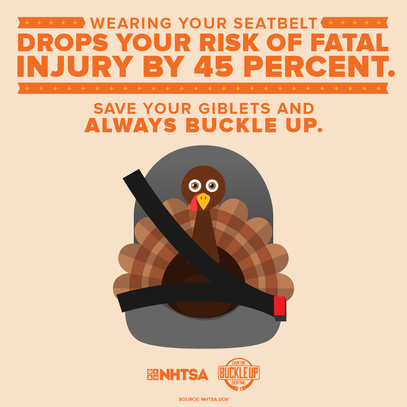|
November 2018
 This Thanksgiving weekend, millions of travelers will hit the roads, traveling to family and friends’ homes for that long-awaited turkey dinner. It’s one of the busiest travel times of the year and, unfortunately, more people on the roadways means the potential for more vehicle crashes. To keep drivers and their passengers safe, please remember this lifesaving tip: Buckle Up – Every Trip. Every Time.
About half of the people killed in motor vehicle crashes nationwide were unbuckled. Much like impaired driving, these deaths represent needless tragedies for families across America. Deaths and injuries could have been reduced with the simple click of a safety belt.
|